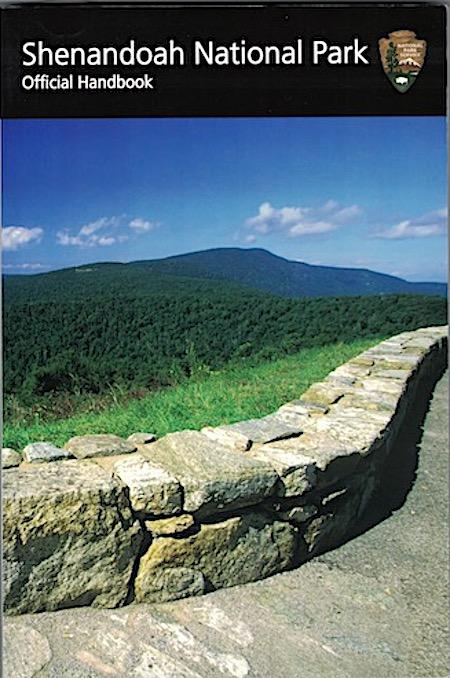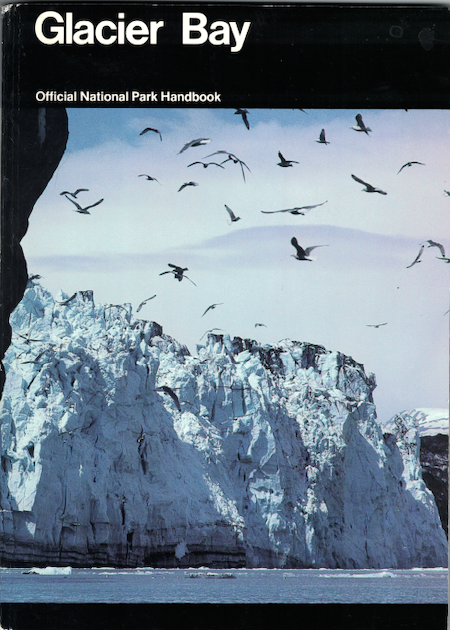
They are, quite frankly, interpretive gold for national parks. "They" are the Official National Park Handbooks that are produced for at least some, if not most, national parks.
Created with a naturalist's bent, these paperback handbooks are richly written and supported by full color photographs. The Shenandoah National Park handbook, published most recently in 2011 by the Shenandoah National Park Association, has a deep section on natural history, another on cultural history, and a third on how to experience the park today. Each section was penned with a literary flourish.
On a late May evening at Big Meadows, it is easy to forget that the rest of the world exists. Does accompanied by wobbly-legged fawns emerge from forests to browse the wide expanse of grassland. Songs of cardinals and wood thrushes gradually give way to the plaintive warbles of screech owls. A thin white mist -- the remnant of an earlier rain shower -- rises slowly from the landscape as darkness envelopes the gray ridges in the distance. When the evening chill sets in, visitors retire to the sitting room in Big Meadows Lodge and settle into rocking chairs, enjoying the fireplace and watching the moon rise through giant picture windows. It is a time to savor, to be grateful for a place where life slows down and tranquility reigns. -- Tim Silver, Ph.D.
The section on the park's cultural history, written by David and Anne Whisnant, traces life on the Blue Ridge Mountains from Native Americans up through the Civilian Conservation Crews that built the park's Skyline Drive, trails and shelters. It also includes the 1960s and the impact the National Park Service's Mission 66 program had on Shenandoah. The Whisnants also provided a detailed overview of how the Park Service dealt with segregation at Shenandoah.

Glacier Bay National Park's edition from 1983 reads like a naturalist's journal, with flowing first-person entries that introduce the reader to the park's tidewater glaciers, wildlife, and cultural history.
Alaska's Glacier Bay confronts us with a mad jumble of paradoxes. Attempts to describe it juxtapose references to thunderous booming of ice and overwhelming silence. The landscape rests both brashly new and bedroock old, at once eternal and transitory, everlasting and ephemeral. The ice sheets lock up climatic history while rewriting today's topography. The crushing magnitude contrasts with the uncanny finesse of staged plant recovery. It is as though two wolrds ere unrolling like the ends of a scroll -- ice receding and vegetation advancing. Might there not be a seam between these two worlds, one wonders, some extra-dimensional passage? No. Both are but landscapes and timescapes of our own one world. -- Ruth Kirk
If you're looking to add these handbooks to your personal national park library, you can order some from the U.S. Government Bookstore. We didn't search for all park guides to see if they were in stock, but it's a good place to start. Just go to the homepage, and put the park of your choosing in the search bar and see what turns up.



Comments
Thank you, Kurt, for your generous comments on our Shenandoah National Park visitor handbook. As with all of the NPS work we have done, we learned greatly from researching and writing this one--and in turn, trying to make it useful to visitors who want to both experience the park and learn from their visit.
Allow me to offer the following. First, the national park handbooks, though now very dated, are excellent resources. They are authoritative, well written, and brief but comprehensive introductions. I was an academic librarian for 25 years. Most academic, and larger public, libraries have government documents collections (They are usually officially designated depositories that receive most materials at no charge.). The national park handbooks, and many other informative resources (including the maps given out when you enter), are government documents (Believe it or not, most despostories have collections of tax forms, which are government documents.). My library had, oh, probably thiry to forty or so of these handbooks, plus many of the maps and lots of other related materials. I used them frequently (And donated materials I collected on my travels.). However, the GPO (Government Printing Office) stopped publishing and distributing them years ago. Why? Well, when asked a ranger told me that the NPS didn't want to compete with private sector publishing. GPO also stopped sending the maps and other print materials as it moved more and more into electronic only formats (much cheaper). Now it's true that most of the parks, monuments, etc. have very informative websites, but I have never found them to be quite as much to my liking as the old print handbooks. So, if your local academic or public library is a depository, you might try seaching it's online catalog or even just take a trip in and check out class number I 29 in the Government Documents collection. A couple final thoughts: some of the handbooks may be available in full text through Google Books or other online resources. Lastly, the NPS has a "media" arm named the Harpers Ferry Center but it does not seem to publish the handbooks.
Watch the documentary on Netflix called "Helvetica" to understand the design of the booklets.
There's several available for download on Project Gutenberg
http://www.gutenberg.org/ebooks/search/?query=national+park
Yes, the NPS handbooks are fantastic. Unfortunately most of them are out of print and hard to find. The NPS tried to replace the handbook series with "The Story Behind the Scenery" series which was big on pictures and lighter on words. That seems to have petered out and some units have published new handbooks, though they are not numbered as before....